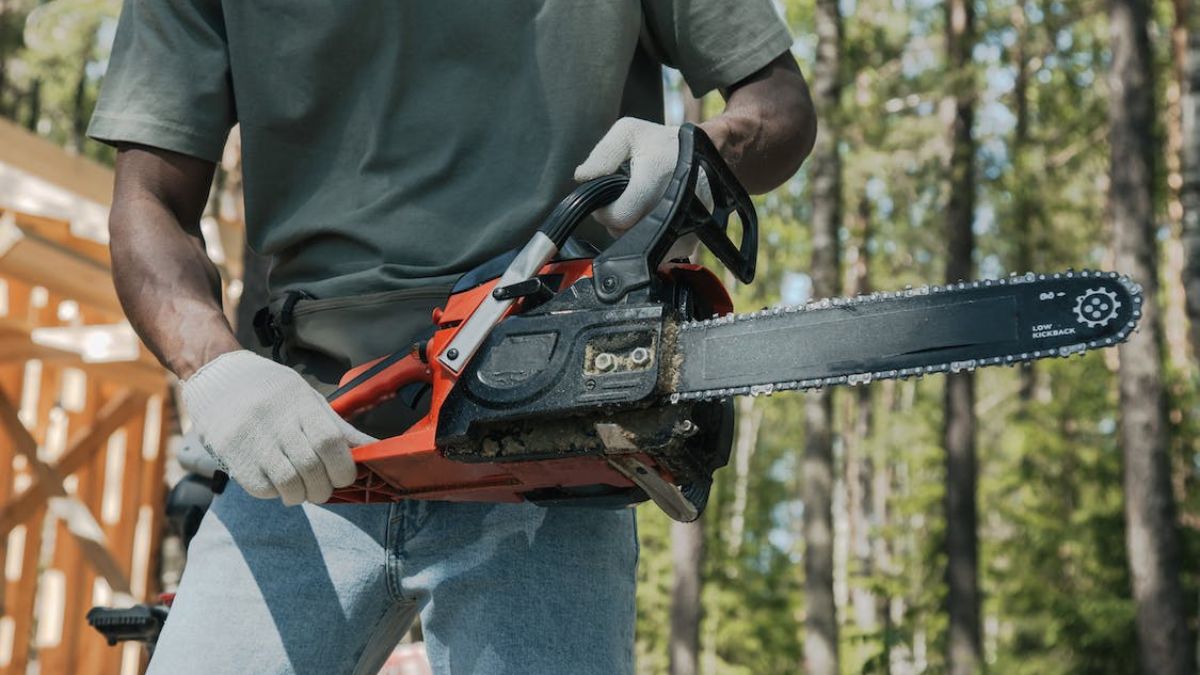Why Were Chainsaws Invented? Powerful and adaptable cutting instruments like chainsaws are now indispensable in many fields. The history of these technological wonders goes back centuries. This article looks at how chainsaws came to be and how they’ve changed over time, providing insight into their significance and the motivations behind their development.
The Origins of Chainsaws: From Surgical Tools to Logging Machines
You can trace the development of the chainsaw all the way back to the advent of modern surgical instruments and the “two-man crosscut saw.” Surgeons in the 18th century utilized a chainsaw-like tool called a “osteotome” to perform delicate bone surgery. Furthermore, the “two-man crosscut saw” was an early forerunner to the contemporary chainsaw; this saw required two persons to operate due to its dual sets of handles.Why Were Chainsaws Invented ?
The Birth of Modern Chainsaws: Revolutionizing Logging Operations
In response to efficiency and safety concerns in the logging business, the modern chainsaw was developed. German engineer Andreas Stihl was instrumental in the 1920s development of the first gasoline-powered chainsaw. This breakthrough greatly increased efficiency and decreased the need for human labor in the logging industry. Chainsaws allowed loggers to cut down trees more quickly and accurately.
Chainsaws Beyond Forestry: Expanding Applications
Chainsaws quickly gained popularity outside of the forestry industry due to their adaptability. In order to prune trees and remove branches, arborists and tree surgeons started utilizing chainsaws. Chainsaws are a necessity in the building and demolition industries because of the variety of materials they must cut through. Chainsaws were also used in fire and rescue operations, allowing first responders quicker access by cutting through flammable materials and clearing away debris. In addition, artists have found a new use for chainsaws: carving exquisite sculptures out of wood.
Technological Advancements: Enhancing Power, Precision, and Sustainability
Improvements in chainsaw technology have come a long way. The shift from gas-powered to electric chainsaws is an important recent innovation. There is less noise, fewer pollution, and more control with an electric chainsaw. Lighter and more ergonomic designs have been developed by manufacturers to aid in user comfort and cut down on fatigue. Chain brakes and anti-vibration systems are just two examples of the safety elements that have been included to help reduce accidents and keep riders safe. The usage of biodegradable lubricants and other environmentally friendly innovations have contributed to this shift in focus.Why Were Chainsaws Invented?
Chainsaws in Popular Culture: Representations and Impact
Popular culture will never forget the impact chainsaws had on the horror and thriller genres. Chainsaws represent danger and terror because of their association with Leatherface from “The Texas Chainsaw Massacre” and other literary and cinematic landmarks. The popularity and familiarity of the chainsaw has been boosted by these depictions.
Challenges and Controversies: Safety Concerns and Environmental Impact
While there are many advantages to using a chainsaw, there are also some drawbacks and debates. Preventing accidents and injuries requires taking necessary safety precautions and having adequate training. Concerns have also been made about the environmental impact of chainsaw use, especially in deforestation and logging practises. To combat these problems and encourage safe chainsaw practises, governments and organisations have enacted legislation and guidelines.
The Future of Chainsaws: Innovations and Potential Applications
Chainsaws have come a long way and yet have a lot of room for development. Robotics and automation have the potential to significantly improve workplace safety and productivity. More efficient chainsaws and the use of renewable energy sources could further minimise emissions and their negative effects on the environment. Moreover, IoT and AI integration may open the way for smart chainsaws with features like real-time data and analytics to aid in decision making, material-specific optimisation of cutting processes, and monitoring and enhancing overall performance.
There is a wide range of uses for chainsaw technology in the future. Modern chainsaws have the potential to revolutionise sustainable logging practises by selectively felling trees, cutting down on wood waste, and bolstering reforestation initiatives in the forestry industry. It is possible that automated chainsaw systems could be used to reduce the dangers of tree clearance in urban areas.
Chainsaws may find uses outside of their typical industry. In emergency situations where every second counts, autonomous chainsaw robots might quickly clear fallen trees and debris, making way for rescue efforts and allowing for the repair of essential infrastructure. In order to efficiently and accurately shape materials, the construction industry could profit from high-tech chainsaws with laser-guided cutting systems.
In addition, greener and more sustainable practises may result from the combination of chainsaws and renewable energy sources like solar or kinetic power. This would help us use less fossil fuels and be better stewards of the planet.
However, problems still exist, as they do with any new technology. Manufacturers should keep spending money on safety measures and training programmes until users feel comfortable using these potent instruments with minimal danger of injury.
Concern for the environment is also essential. Producing chainsaws with low environmental effect, such as those made from carbon-footprint-lowering materials and with efficient energy consumption systems, will become increasingly important as the demand for sustainable practises increases.
Conclusion
Why Were Chainsaws Invented? Chainsaws have evolved greatly from their early days as simple crosscut saws and medical instruments. Chainsaws are incredibly useful and have revolutionised many different industries in addition to logging. Power, accuracy, and longevity have all been enhanced by technological progress, and their place in the public consciousness has been firmly established by popular culture.
The scope for new developments in chainsaw construction is large moving forward. Smarter, safer, and more sustainably made chainsaws may be possible with the help of automation, green technology, and Internet of Things integration. The chainsaw business has the potential to grow and make the world a better place if people use them responsibly, take safety seriously, and make environmental protection a priority.











